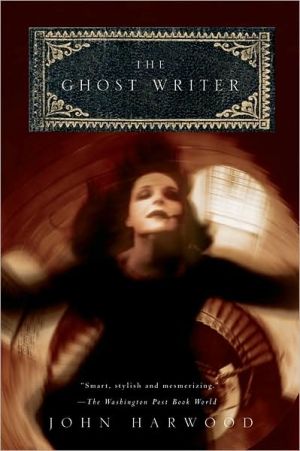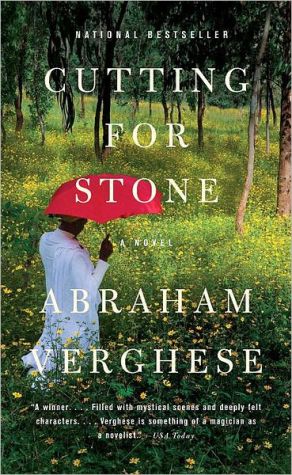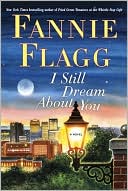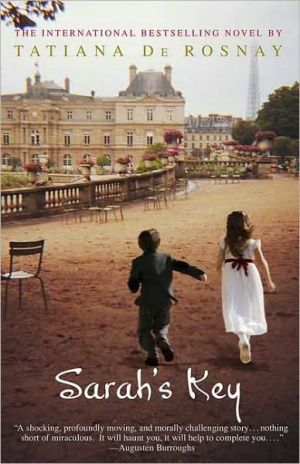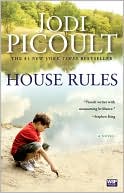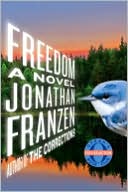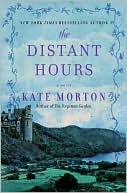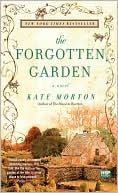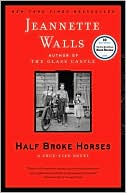The Ghost Writer
In this tantalizing tale of Victorian ghost stories and family secrets, timid, solitary librarian Gerard Freeman lives for just two things: his elusive pen pal Alice and a story he found hidden in his mother's drawer years ago. Written by his great-grandmother Viola, it hints at his mother's role in a sinister crime. As he discovers more of Viola's chilling tales, he realizes that they might hold the key to finding Alice and unveiling his family's mystery-or will they bring him the untimely...
Search in google:
A tantalizing tale of family secrets hidden in spine-tingling ghost stories—that have started to come true Growing up in a small Australian town, Gerard Freeman loves to hear his mother talk about her idyllic childhood in an English country manor. But she swears that she will never return to England, and refuses to tell him what happened to her family, though she is clearly terrified of some invisible yet ever-present threat. One hot afternoon, he waits until she is napping, then creeps into her bedroom to break open the drawer that’s always locked, the one that he hopes holds all her secrets. . . .Twenty years later, Gerard has not left home – he works as a librarian – but he lives for just two things: his English penfriend Alice, for whom he yearns with all his heart, and the ghost story he found in his mother’s drawer all those years ago. Written by his great-grandmother Viola, it hints at the terrible crime that haunted his mother, and, finally, destroyed her. And as Viola’s chilling tales lead him to London, Gerard realizes that the stories might hold the key to finding Alice as well as unveiling his family's mystery – or are they leading him directly to the untimely death they seem to foretell?Harwood’s deliciously clever debut never loosens its grip on us as it moves from Gerard's present-day detective work to the macabre world of Viola's supernatural stories, from Australia to London, from the safety of books to the terror of a ghost story come alive. Astonishingly assured, compulsively readable, The Ghost Writer shows us just how dangerous family skeletons – and stories—can be.The New York Times - Terrence RaffertyWith all these literary revenants hovering about, The Ghost Writer manages to evoke, as not enough contemporary horror does, both the confident past and the more anguished present of the genre, and even to suggest, slyly, that although the illustrious tradition of the genteel British ghost story remains with us, we need to be very, very careful about disturbing its rest.
I FIRST SAW THE PHOTOGRAPH ON A HOT JANUARY AFTERnoon in my mother's bedroom. She was asleep-so I thought-in the sunroom at the other end of the house. I crept in through the half-open door, enjoying the feeling of trespass, breathing the scents of perfume and powder and lipstick and other adult smells, mothballs for the silverfish and insect spray for the mosquitoes our screens never quite managed to keep out. The net curtains were drawn, the blind half lowered; there was nothing to see through the window except the blank brick wall of old Mrs Noonan's place next door.\ I stole across to my mother's dressing-table and stood listening in the dim light. The house was silent apart from the muffled ticking and creaking which my father insisted was the iron roof expanding in the heat, not someone creeping about in the dark cavity above the ceiling. One by one I tried the drawers, three on each side. As always, only the bottom left-hand drawer was locked. There were wooden panels between each layer, so you couldn't see what was in the drawer below by pulling out the one above. Last time I had searched through the litter of tubes and jars and bottles crammed into the uppermost drawer on the right. Today I started on the next one down, rummaging through a shoebox crammed with packets of needles and carded buttons, reels of coloured cotton and hanks of wool, the loose ends hopelessly tangled.\ To see if there was anything behind the shoebox, I tugged at the drawer. It stuck, then shot right out of the dressing-table and hit the floor with a thud. I tried to force the drawer back in, but it wouldn't go. Any second now, I expected to hear my mother's footsteps hurrying up the hall, but no sound followed. Even the ticking in the ceiling had died away.\ There seemed no reason why it wouldn't fit. Except that something cold and hard was stuck to the underside, right at the back. A small brass key. I had prised it loose, peeled away the tape and opened the locked drawer before the enormity of what I was doing had begun to register.\ The first thing I saw was a book, whose title would elude me for years afterward. The Carillon? The Chemillon? The Chalmion? A word I didn't know. The grey paper cover was crumbling at the edges and pitted with rust-coloured spots. It had no pictures and looked grown-up and boring.\ I couldn't find anything else. Then I saw that the brown paper lining on the bottom of the drawer was actually a very large envelope. It had a typewritten address and stamps on it, and one end had been slit with a knife. Another disappointment: just a thick bundle of pages with typewriting on them, tied together with rusty black ribbon. As I drew out the bundle, a photograph slid into my lap.\ I had never seen the woman in the photograph before, and yet I felt I knew her. She was young, and beautiful, and unlike most people I had seen in photographs she did not look straight at you, but gazed away to one side, her chin tilted slightly upwards, as if she did not realise anyone was looking at her. And she did not smile, at least not at first. As I went on staring at her I began to think I could see the faintest trace of a smile, just at the corner of her mouth. Her neck was amazingly long and slender, and though the picture was in black and white, I felt I could see the changing colours of her skin where the light fell across the back of her neck and touched her forehead. Her hair, masses and masses of it, was drawn back behind her head and wound up in a long plait, and her gown-as I felt sure a dress as wonderful as hers must be called-was made of a soft dark velvety material, with shoulders gathered like the wings of angels.\ Boys, I had learned from somewhere, were supposed to think their mothers were beautiful, but I suspected mine was not. She looked older and thinner than most of the mothers at my school, and worried about everything, especially me. Lately she had been very worried indeed. There were dark pouches under her eyes; the lines across her forehead and around her mouth seemed to be cutting deeper into the skin, and her hair, which used to be dark brown, had grey streaks running through it. I worried that I had worn her out by not being good enough; I was always meaning to be better, yet here I was burgling her secret drawer. But I also knew that the anxious, haunted look could descend when I had done absolutely nothing wrong. Whereas the woman in the photograph was calm and beautiful and alive, more alive than anyone I had ever seen in a picture.\ I was still kneeling in front of the drawer, lost in the photograph, when I heard a hissing sound from the doorway. My mother stood rigid, fists clenched, nostrils flared. Tufts of hair stuck out from her head; the whites of her eyes seemed to be spilling out of their sockets. For a long, petrified instant she didn't move. Then she sprang, hitting and hitting and hitting me, screaming in time to the blows that fell wherever she could reach until I broke away and fled wailing down the hall.\ FROM OLD MRS NOONAN I LEARNED THAT IF YOU SHIVERED for no reason it meant that someone was walking over your grave. Mrs Noonan was thin and stooped and had twisted papery hands with strange bulges around the knuckles; she smelt of stale lavender and felt the cold even in summer, especially when she took her first sip of tea. My mother didn't like her saying it, so Mrs Noonan took to shivering silently when she was drinking tea in our kitchen, but I knew what she meant. When I wasn't being bad, I used to imagine that someone had found out my mother's grave, a man in dark clothes with a dead white face who dodged behind a tombstone whenever he saw you coming, so that you could never catch him doing it. That was why her anxious look came down for no reason at all. Some days you could tell that he was tramping back and forth, back and forth, over and over her grave.\ We would sometimes drive past Mawson cemetery, but I'd never been inside because we had no relatives there to visit. My father's parents were buried in Sydney, and he had a married sister in New Zealand who wrote every Christmas, but they never came to see us. All my mother's relatives were buried in England, and that was where I imagined her grave must be.\ Mawson is an overgrown country town sprawled along the edge of the Great Southern Ocean. It used to be called Leichhardt, after some luckless explorer who never returned from the dead heart, until, so my father explained, the council decided to change it to something more cheerful. Beyond the remnants of the old town centre there's nothing much to see except shopping malls and filling stations and mile after mile of sprawling identical suburbs. Beaches to the south, hills to the north; the dead heart beyond. That was where you ended up if you crossed the narrow strip of farmland beyond the hills and kept driving north through the endless sandy scrub and saltpan into the desert. In summer when the north wind blew, clouds of fine red dust covered the town. Even inside, you could feel the grittiness of it between your teeth.\ Copyright © John Harwood 2004\ All rights reserved. No part of this publication may be reproduced or transmitted in any form or by any means, electronic or mechanical, including photocopy,\ recording, or any information storage and retrieval system, without permission in writing from the publisher.\ Requests for permission to make copies of any part of the work should be mailed to the following address: Permissions Department, Harcourt, Inc.,\ 6277 Sea Harbor Drive, Orlando, Florida 32887-6777.
\ Talk of the NationA fabulous, very spooky ghost story in the classic mode that will remind some people of A.S. Byatt's Possession. \ —Laura Miller\ \ \ \ \ \ Entertainment Weekly"Intricate and engrossing. Harwood raises the ghost of the Victorian ghost story. One ghoulishly absorbing read. B+."\ \ \ New York Daily News"The Ghost Writer" is a grand Victorian tale in which Gerard becomes increasingly certain something wicked his way comes.\ \ \ \ \ Milwaukee Journal Sentinel"Spooky and gripping, a chilling tale sure to make your spine shiver on even the hottest summer day."\ \ \ \ \ San Jose Mercury News"You can't help being dazzled by Harwood's inventiveness, especially his sure-footed mastery of prose style. [An] entertainingly accomplished first novel."\ \ \ \ \ Boston Globe"'The Ghost Writer," is a first-class creeper, a literary ghost story in the Victorian tradition.\ \ \ \ \ Murder Ink Bookstore Newsletter"A creepy literary mystery. A terrific debut, very accomplished and assured."\ \ \ \ \ Washington Post Book World"Harwood has written a smart, stylish and mesmerizing book."\ \ \ \ \ Denver Post"A compelling ghost story and an auspicious debut."\ \ \ \ \ Booklist"Harwood's debut is a haunting literary gothic, a slow-building suspense thriller. Lyrical, labrynthine. An atmospheric paranormal thriller with many surprises."\ \ \ \ \ The Guardian"As a mystery, The Ghost Writer is irresistible, pushing all the genre's gothic buttons and casting a convincingly Dickensian pall."\ \ \ \ \ Salon.comBy the last page, all loose ends have been tied up, but the uncanny still clings to everything. \ —Laura Miller\ \ \ \ \ \ The Weekend Australian"An exceptionally inventive first novel."\ \ \ \ \ The Times of London"An elegant homage to the Victorian ghost story tradition. Like Dickens's The Pickwick Papers, Harwood makes your flesh creep."\ \ \ \ \ Salon.com"A fabulous, very spooky ghost story in the classic mode that will remind some people of A.S. Byatt's "Possession.\ \ \ \ \ Terrence RaffertyWith all these literary revenants hovering about, The Ghost Writer manages to evoke, as not enough contemporary horror does, both the confident past and the more anguished present of the genre, and even to suggest, slyly, that although the illustrious tradition of the genteel British ghost story remains with us, we need to be very, very careful about disturbing its rest.\ — The New York Times\ \ \ \ \ Publishers WeeklySly nods to spooky literary spinsters-Henry James's Miss Jessel and Dickens's Miss Havisham-set the tone for this confident debut, a gothic suspense novel with a metatextual spin. Gerard Freeman grows up on the windswept southern coast of Australia in the late 20th century with a controlling mother strangely silent about the details of her childhood in England. His only solace is steadfast English pen friend, Alice, to whom he confides everything. What was Gerard's mother, Phyllis, hoping to escape when she left England? The protagonist slowly pieces together his mother's past with the aid of short stories written by his great-grandmother, Viola. These cunning tales, filled with supernatural occurrences and s ances, are seamlessly embedded in the main narrative, offering Gerard-and readers-enticing clues into his troubled family's history. After Phyllis's death, her newly liberated son travels to England, hoping to learn more and to pursue elusive Alice. As he searches through the country house his mother inhabited long ago, Gerard finds past and present fusing in horrifying fashion. In the hands of a lesser novelist, sustaining several plot lines might have been difficult. But the novel links textual investigation and sublimated passion, building to a satisfying, unexpected ending. Agent, Kathleen Anderson. (July) Forecast: This A.S. Byatt-lite offering will appeal to the A&E set and to horror/suspense readers looking for something with a literary edge. Copyright 2004 Reed Business Information.\ \ \ \ \ Publishers Weekly"Combines suspense that keeps readers up with a literary voice that allows them to respect themselves in the morning."\ \ \ \ \ Kirkus"Compulsively readable. A wonderful debut, evoking a century's worth of family history, by a multitalented and artistically ambidextrous newcomer."\ \ \ \ \ PW"Sly nods to spooky literary spinsters - James'' Miss Jessel, Dickens's Miss Havisham - set the tone for this confident debut."\ \ \ \ \ Library JournalHarwood's compelling first novel speaks of love, family, and obsession. Since age 14, Australian Gerard Freeman has been corresponding with pen pal Alice Jessel and dreams of one day visiting her in England, in spite of his mother's disapproval. Alice, confined to a wheelchair, refuses to meet or even talk on the phone with Gerard until she can walk again. While snooping in his mother's dresser one day, Gerard finds a ghost story written by his grandmother Viola. Over time, he finds more stories, all eerily reminiscent of his family history but written years before the events actually happened. What is going on? Will he ever find his beloved Alice, or will family tragedies somehow stand in their way? Harwood's well-drawn characters and Gothic plot propel the reader toward the novel's denouement. Including the text of Viola's stories adds to the surreal drama, as they serve as untrustworthy flashbacks and help blur the line between fantasy and reality. Strongly recommended for all but the smallest public libraries.-Laurel Bliss, Princeton Univ. Lib., NJ Copyright 2004 Reed Business Information.\ \ \ \ \ Kirkus ReviewsA compulsively readable, sturdily plotted mystery set in the late 19th and early 20th centuries. Here, the central importance of paintings, diaries, and ghosts lends the intrigue a distinctly Jamesian feel. In the first, and stronger, half, we meet Australian teenager Gerard Freeman just as he's opened a pen-pal relation with Alice, who lives in England. Over time, their relationship becomes epistolarily passionate as they share the most intimate secrets of each other's fantasies. Alice, however, confides that she's bound to a wheelchair and is highly reluctant to meet Gerard. Woven into the rest is the secretive family history of Gerard's mother Phyllis, who grew up in wartime England, including the enigmatic death of her sister Anne. This background unfolds slowly through a series of short stories that are reprinted in the book, written in the early 20th century by his great-grandmother "V.H." (Viola), and suggesting that Phyllis was involved in Anne's death. The stories are of course drawn in varying degrees from the actual lives of the girls, and it becomes Gerard's personal project to sort out what happened in the lives of the women and what was pure fiction. A subplot involves the work of an artist, Henry St. Clair, whose paintings, which many find mesmerizing, iconically refer to madness and the existence of ghosts. British author Harwood's touch in evoking the relation between the visual arts and inner states of mind is admirably sure, and Gerard does in fact untangle the family mysteries and find out the identity of his pen-pal Alice-but not before spirits and ghostlike voices have given him a number of promptings. A wonderful debut, evoking a century's worth of family history,by a multitalented and artistically ambidextrous newcomer. Agent: Kathleen Anderson/Anderson Grinberg\ \
